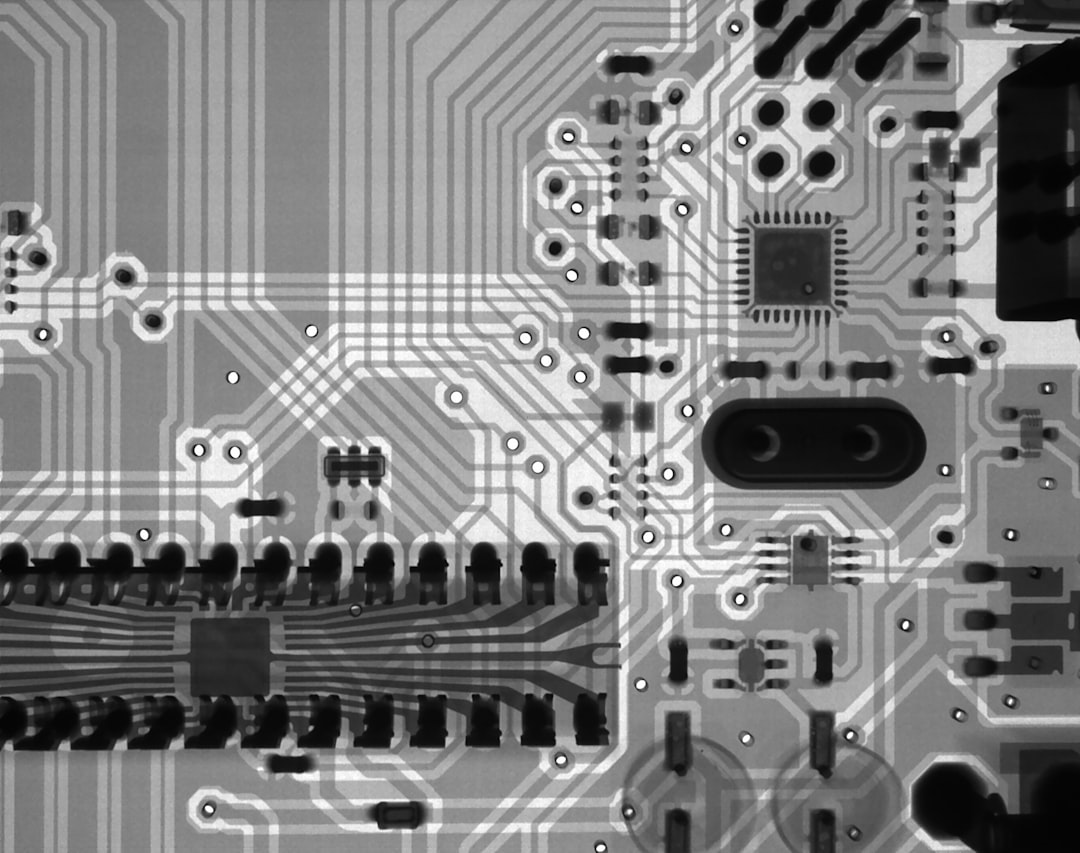Unlock encrypted content
Please enter your SSCE key to initiate on-the-fly decryption.
Decryption key: (Click cancel if you don't have the key)
Copied link to clipboard.
This feature is unavailable for free accounts. Upgrade now and enjoy all Premium benefits.
Go Premium!
This feature is unavailable for free accounts. Upgrade now and enjoy all Premium benefits.
Go Premium!
Please open this page in browser ( Google Chrome or Safari ) to use this feature.
Open In Browser
Joining the Limitations of NAS with the Emerging Technologies of Photo Sharing and 5G Technology
Random related video for this blog.
Copied share link to clipboard.
Network Attached Storage (NAS) has long been a popular choice for individuals and businesses alike, providing a centralized location for storing and accessing files. However, NAS does come with its own set of limitations. In this article, we will explore the limitations of NAS and how emerging technologies like photo sharing and 5G technology can enhance the capabilities of NAS, paving the way for more efficient data management and storage.
The Limitations of NAS
NAS, while a reliable option for data storage, does have its limitations. One of the primary concerns is the limited storage capacity. Traditional NAS devices have a finite amount of storage space, which can become a problem as data continues to grow exponentially. This limitation can be particularly challenging for businesses or individuals dealing with large files, such as high-resolution images or videos. Another limitation of NAS is the reliance on a local network for data access. While this may not be an issue for users within the same network, it can pose challenges when attempting to access files remotely. This limitation restricts the mobility and flexibility of data access, especially in today's increasingly remote work environment. Additionally, NAS often lacks robust sharing capabilities. Sharing files stored on NAS devices can be cumbersome, requiring users to manually generate file links or provide access permissions. This process can be time-consuming and prone to errors, especially when dealing with a large number of files or collaborating with multiple users.Enhancing NAS with Photo Sharing and 5G Technology
To overcome the limitations of NAS, emerging technologies like photo sharing and 5G technology offer promising solutions. Photo sharing platforms, such as FileLu, provide a seamless way to store, organize, and share photos and videos securely. These platforms offer features like automatic camera upload, which simplifies the process of backing upphotos and videos from mobile devices to the cloud. By integrating photo sharing platforms with NAS, users can leverage the benefits of both technologies. NAS can serve as a centralized storage solution for large files and backups, while photo sharing platforms provide an intuitive interface for accessing and sharing files. This integration allows for efficient management of data across multiple devices and locations. The advent of 5G technology further enhances the capabilities of NAS and photo sharing platforms. With its lightning-fast speeds and low latency, 5G technology enables seamless remote access to NAS devices and cloud storage. Users can effortlessly stream or download large files stored on NAS, regardless of their physical location. This technology also opens up possibilities for real-time collaboration and virtual realities, where multiple users can work on the same files simultaneously, regardless of their geographical location.
Data Sharing Permissions and Blockchain Technology
Another area where emerging technologies can enhance NAS is in data sharing permissions. Traditional NAS solutions often rely on manual configuration of access permissions, which can be cumbersome and prone to human error. Blockchain technology offers a decentralized and secure approach to managing data sharing permissions. By leveraging blockchain technology, NAS devices can establish a secure and immutable record of access permissions. Each user can have a unique digital identity stored on the blockchain, and access to files can be granted or revoked through smart contracts. This ensures that data remains secure and only accessible to authorized individuals. Furthermore, blockchain technology can provide transparency and accountability in data sharing. Every transaction or change in access permissions is recorded on the blockchain, providing a comprehensive audit trail. This can be particularly beneficial for businesses or organizations that need to adhere to strict data governance and compliance regulations.Interstellar Colonization and the Future of Data Management
Looking ahead, the limitations of NAS and the advancements in emerging technologies have far-reaching implications, even beyond Earth. As humanity explores the possibility of interstellar colonization, efficient data management and storage become crucial. The challenges of limited storage capacity, remote access, and secure data sharing will only become more pronounced as we venture into the vastness of space. The integration of NAS with photo sharing platforms, 5G technology, and blockchain technology can pave the way for efficient and secure data management in space exploration. Robust storage solutions, seamless remote access, and decentralized data sharing permissions will be essential for the success of interstellar missions. In conclusion, while NAS has its limitations, emerging technologies like photo sharing platforms, 5G technology, and blockchain technology offer exciting possibilities for enhancing its capabilities. By integrating these technologies, users can overcome the challenges of limited storage capacity, remote access, and secure data sharing. As we continue to push the boundaries of technology and explore new frontiers, efficient data management and storage will play a crucial role in our collective progress.Frequently Asked Questions (FAQs)
Question: How can photo sharing platforms enhance NAS? Answer:
Photo sharing platforms provide a seamless way to store, organize, and share photos and videos securely. By integrating photo sharing platforms with NAS, users can leverage the benefits of both technologies, allowing for efficient management of data across multiple devices and locations.
Question: How does 5G technology enhance NAS? Answer:
5G technology offers lightning-fast speeds and low latency, enabling seamless remote access to NAS devices and cloud storage. Users can effortlessly stream or download large files stored on NAS, regardless of their physical location. This technology also opens up possibilities for real-time collaboration and virtual realities.
Question: What is the role of blockchain technology in data sharing permissions? Answer:
Blockchain technology provides a decentralized and secure approach to managing data sharing permissions. Each user has a unique digital identity stored on the blockchain, and access to files can be granted or revoked through smart contracts. This ensures that data remains secure and only accessible to authorized individuals.
Case Studies: 1. Company A, a multinational corporation, integrated NAS with a photo sharing platform and experienced a significant improvement in data management and collaboration. The seamless integration allowed employees to access and share files easily, resulting in increased productivity and efficiency. 2. Research Institute B utilized 5G technology to remotely access their NAS devices, enabling researchers to analyze and process large datasets from different locations. This capability facilitated real-time collaboration and accelerated their research projects. 3. Organization C, operating in a highly regulated industry, implemented blockchain technology to manage data sharing permissions within their NAS environment. The transparent and secure nature of the blockchain ensured compliance with data governance regulations and enhanced data security.
By Amelia Isabella
Email: [email protected]
Related
Artificial Intelligence (AI): Shaping Futuristic Societies with Emerging Technologies
August 2, 2023
Read More
Introducing FileLu: The Future of File Collaboration and Brain-Computer Interface
August 2, 2023
Read More
Efficient Backup and Recovery Processes: Ensuring Data Security and Accessibility
August 2, 2023
Read More
Advanced Weaponry, Online File Storage, and Advanced Encryption Algorithms: The...
August 2, 2023
Read More
Data Mirroring Across Multiple Data Centers: Ensuring Data Redundancy and...
August 2, 2023
Read More
Human-Machine Connection: Revolutionizing the Future with Advanced File Management and...
August 2, 2023
Read More
Popular
Latest
The Future of Digital Transformation: Exploring Smart Homes, Efficient File...
November 30, 2025
Read More
Exploring the Benefits of Cloud Storage and Innovative Technologies in...
November 26, 2025
Read More
The Future of Technology: Exploring Biohacking, Space Tourism, and Digital...
November 23, 2025
Read More
The Future of File Sharing: Streamlined Workflows for Photographers and...
November 19, 2025
Read More
Exploring the Intersection of Technology: From Cybersecurity to Augmented Reality...
November 16, 2025
Read More
The Future of File Management: Embracing Edge Computing and Efficient...
November 12, 2025
Read More
The Future of File Sharing: Exploring User-Friendly Solutions and Data...
November 5, 2025
Read More
The Future of Cloud Storage: How FileLu Empowers Creative Professionals...
November 2, 2025
Read More
The Future of Autonomous Technologies: Innovations in Robotics, File Sharing,...
October 29, 2025
Read More
Emerging Technologies Revolutionizing File Management: From Li-Fi to Robust Collaboration...
October 26, 2025
Read More
Emerging Technologies: Exploring the Impact of File Access Auditing, Genetic...
October 19, 2025
Read More
The Future of Data Storage: Exploring Advanced Encryption, Mobile Integration,...
October 5, 2025
Read More
Exploring the Future of Data Management: Security, Efficiency, and Cognitive...
September 28, 2025
Read More
Revolutionizing Data Management: Innovations in Storage, Security, and Sustainable Technology.
September 24, 2025
Read More




















